Dacia Duster Estate (2013-2018) review

At a glance
| Price new | £9,290 - £18,235 |
|---|---|
| Used prices | £1,315 - £9,313 |
| Road tax cost | £35 - £345 |
| Insurance group | 5 - 12 |
Get an insurance quote with

|
|
| Fuel economy | Not tested to latest standards |
| Range | 385 - 704 miles |
| Number of doors | 5 |
| View full specs for a specific version | |
Available fuel types
Petrol
Diesel
Pros & cons
- Incredibly cheap to buy
- Two- or four-wheel drive
- Lots of interior space
- Base models don't have air-con
- Some interior plastics fragile
- Not the cheapest to run
Dacia Duster Estate (13-18) rivals
Overview
The original Dacia Duster is a fantastic car. It represented incredible value for money when it was new but, now it’s passed into the second hand market, you’d be mad to not consider one if you’re shopping for used SUV. In fact, we love it so much that we made it our best off roader in the 2019 Parkers new car awards.
Prices for the Mk1 Dacia Duster now start from just over £2,000 – and we can’t think of any other car that can offer the same level of practicality, fuel efficiency, dependability and off-road ability for the same amount of cash.
For that reason, the Duster doesn’t really have any direct rivals. Sure, there are family SUVs such as the Mk2 Ford Kuga, the previous generation Kia Sportage and the old Nissan Qashqai – but these are all far more luxurious, a little more expensive and far more out of their depth when the going gets tough.
Dacia Duster known faults and common problems
The original Duster has proved itself to be a dependable workhorse – at least mechanically. Most of the car’s problems seem to stem from either poor maintenance or slightly sub-standard wiring from the factory. However, because the car is so simple, these faults should be relatively cheap and easy to fix.
Scroll down for a list of the most common issues that plague the Duster, some of you should be able to remedy most of them yourself at home. Check out our guides on the best tool kits for home mechanics, the best car jacks and the best axle stands. If you’d rather not tackle the work yourself, don’t be afraid to walk away. There are loads of cars to choose from, so finding a better maintained one won’t be difficult.
Buying guide
Common issues and what to look for if you’re considering buying one
1. Clogged diesel particulate filters
The diesel Duster was a popular choice because it’s so frugal. But lots of drivers used them incorrectly by pottering time around town at low speeds. That clogs the DPF full of sooty deposits and impacts engine performance. If your car is suffering from this, try taking it on a long drive or use a diesel engine cleaner to clear it out.
2. Rust
Dacia’s approach to rust proofing was a little fast and loose. Some of these areas (such as the tailgate, windscreen wiper mount and doors) are merely cosmetic – but the cars are also known to have more serious rust problems on their undersides. Thoroughly check your car over before dishing out any cash.
3. Electrical faults
The Duster was a cheap car to buy when it was new – and Dacia had to cut corners somewhere to keep its price low. The wiring loom was one of those areas. The wires are prone to corroding and breaking. The most common faults are that the horn and the indicators stop working, both of which are MOT failures.
4. Gearbox clonk
Some owners have reported a crashing sound when switching between first and second gear, which would normally indicate worn synchromeshes. What’s particularly curious is the problem seemed to affect the cars more when they were new – and the problem can sometimes be remedied with a gearbox service. Check your car on the test drive.
5. Clutch pedal
The Duster’s clutch pedal can jam against the firewall – and the fix can be minor or major surgery depending on how fortunate you are. If you’re lucky, it’ll just be a slave cylinder and a fluid change. If you’re unlucky, you’ll need a completely new clutch assembly. Our advice is just to walk away if the Duster you’re viewing has clutch issues. There are plenty of other cars to choose from.
6. Squeaky suspension
The Duster is a rather agricultural machine, so it should come as no surprise that its suspension can creak and groan like a tractor when passing over speed bumps. If it’s irritating you, get under the car and check the condition of the suspension joints and bushes. If they’re not damaged, try lubricating them with some silicone spray.
7. Poor tracking
Lots of owners report their front-wheel drive Dusters track badly. They tend to pull to the left, even after having their chassis aligned using specialist equipment. The reasons for the fault vary, ranging from mismatched shock absorbers to poorly seated tyres and naff tolerances from the factory. Watch out for it on the test drive.
8. 1.5-litre diesel
Let us be crystal clear – this is not a bad engine. But they’re not perfect, especially if you end up with an unloved example. They’ve suffered lots of different faults, including injector failures, wiring problems and turbocharger failures. Sometimes, if the turbo lets go, it can grenade the engine on the way out.
From what we can see, most of the faults seems to be due to poor maintenance and incorrect use. Make sure your car has been serviced regularly and ask the owner how they drove it. If it was local only, shop elsewhere. The inside of the engine will likely be caked in carbon choking performance.
9. Timing belt
The 1.5-litre diesels use a timing belt rather than a timing chain. It’s vital they’re replaced every 70,000 miles. If your car is nearing or past that mileage and it hasn’t had its timing belt changed, either walk away or use that issue to negotiate the seller down on the price.
10. Leaky seals
Some Dusters leak like sieves. If you have puddles in your footwells, there are several places you can look to stem the tide. The lucky quick fixes are the door seals and the rubber bungs in the scuttle panel. The more challenging repairs are poorly sealed windscreens and badly sealed scuttle panels.
What models and trims can you buy?
Despite being so cheap when it was new, the Duster was fitted with a good range of standard equipment. The most basic 4×2 Access model gave buyers 16-inch steel wheels, roof bars, electric front windows, four airbags, emergency spare wheel, height-adjustable steering wheel and remote central locking.
Middling Ambiance models got extra treats such a radio/CD player with aux-in, Bluetooth and USB connection plus the added practicality of 60/40 split rear seats. The flagship Laureate models built on this specification with air conditioning, 16-inch alloys, electric rear windows, leather steering wheel and a trip computer.
Over the next few pages, we’ll review each aspect of the Mk1 Dacia Duster, exploring its practicality, technology, comfort, fuel economy and driving experience. We’ll then offer our final verdict on the car and tell you whether it makes a good used purchase. If you’re curious about how we reached our verdict on the Duster, head over to our how we test cars explainer page to learn more about our testing process.


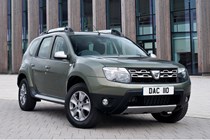
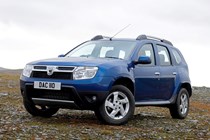
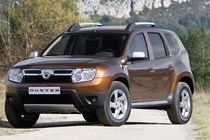
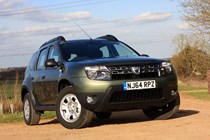
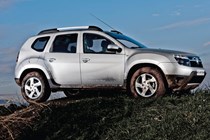
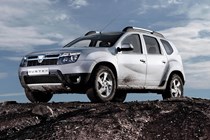

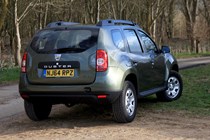
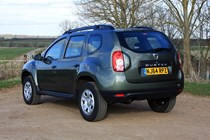

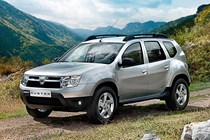
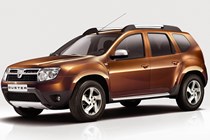
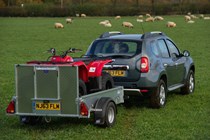

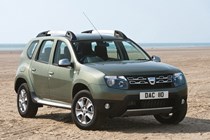
.jpg)
.jpg)
.jpg)
.jpg)
.jpg)
.jpg)
.jpg)
.jpg)
.jpg)
.jpg)
.jpg)
.jpg)
.jpg)
.jpg)
.jpg)
.jpg)
.jpg)
.jpg)
.jpg)
.jpg)
.jpg)
.jpg)
.jpg)


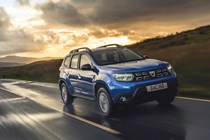
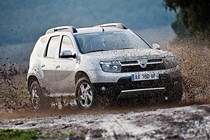
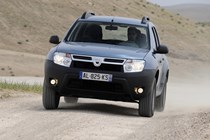
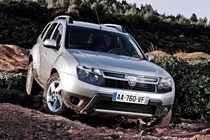
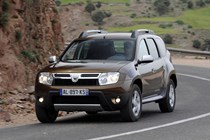
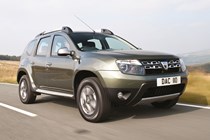
.jpg)
.jpg)
.jpg)
.jpg)
.jpg)

.jpg)
.jpg)
.jpg)
.jpg)
.jpg)
.jpg)
.jpg)
.jpg)
.jpg)
.jpg)
.jpg)
.jpg)
.jpg)
.jpg)
.jpg)
.jpg)
.jpg)
.jpg)
.jpg)
.jpg)
.jpg)
.jpg)
.jpg)
.jpg)
.jpg)
.jpg)
.jpg)
.jpg)
.jpg)
.jpg)
.jpg)
.jpg)
.jpg)
.jpg)
.jpg)
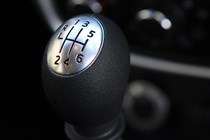

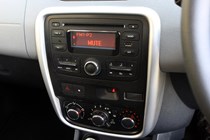
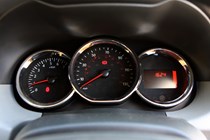
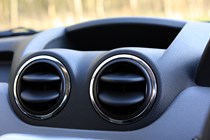
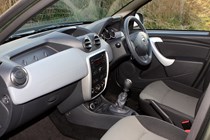
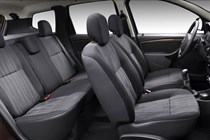
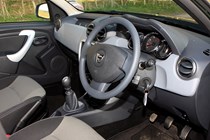
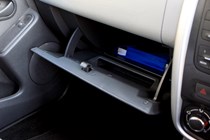
.jpg)
.jpg)
.jpg)
.jpg)
.jpg)
.jpg)
.jpg)
.jpg)
.jpg)
.jpg)
.jpg)
.jpg)
.jpg)
.jpg)
.jpg)
.jpg)
.jpg)
.jpg)
.jpg)
.jpg)
.jpg)
.jpg)
.jpg)
.jpg)
.jpg)
.jpg)
.jpg)
.jpg)
.jpg)
.jpg)
.jpg)
.jpg)
.jpg)
.jpg)
.jpg)
.jpg)
.jpg)
.jpg)
.jpg)
.jpg)
.jpg)
.jpg)
.jpg)
.jpg)
.jpg)
.jpg)
.jpg)
.jpg)
.jpg)
.jpg)

.jpg)
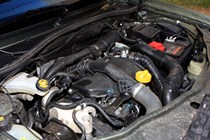
.jpg)
.jpg)
.jpg)
.jpg)
.jpg)
.jpg)
.jpg)
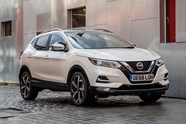
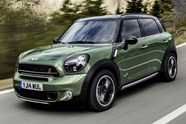
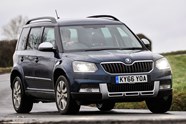















.jpg?quality=50)
.jpg?quality=50)
.jpg?quality=50)
.jpg?quality=50)
.jpg?quality=50)
.jpg?quality=50)
.jpg?quality=50)
.jpg?quality=50)
.jpg?quality=50)
.jpg?quality=50)
.jpg?quality=50)
.jpg?quality=50)
.jpg?quality=50)
.jpg?quality=50)
.jpg?quality=50)
.jpg?quality=50)
.jpg?quality=50)
.jpg?quality=50)
.jpg?quality=50)
.jpg?quality=50)
.jpg?quality=50)
.jpg?quality=50)
.jpg?quality=50)








.jpg?quality=50)
.jpg?quality=50)
.jpg?quality=50)
.jpg?quality=50)
.jpg?quality=50)

.jpg?quality=50)
.jpg?quality=50)
.jpg?quality=50)
.jpg?quality=50)
.jpg?quality=50)
.jpg?quality=50)
.jpg?quality=50)
.jpg?quality=50)
.jpg?quality=50)
.jpg?quality=50)
.jpg?quality=50)
.jpg?quality=50)
.jpg?quality=50)
.jpg?quality=50)
.jpg?quality=50)
.jpg?quality=50)
.jpg?quality=50)
.jpg?quality=50)
.jpg?quality=50)
.jpg?quality=50)
.jpg?quality=50)
.jpg?quality=50)
.jpg?quality=50)
.jpg?quality=50)
.jpg?quality=50)
.jpg?quality=50)
.jpg?quality=50)
.jpg?quality=50)
.jpg?quality=50)
.jpg?quality=50)
.jpg?quality=50)
.jpg?quality=50)
.jpg?quality=50)
.jpg?quality=50)
.jpg?quality=50)









.jpg?quality=50)
.jpg?quality=50)
.jpg?quality=50)
.jpg?quality=50)
.jpg?quality=50)
.jpg?quality=50)
.jpg?quality=50)
.jpg?quality=50)
.jpg?quality=50)
.jpg?quality=50)
.jpg?quality=50)
.jpg?quality=50)
.jpg?quality=50)
.jpg?quality=50)
.jpg?quality=50)
.jpg?quality=50)
.jpg?quality=50)
.jpg?quality=50)
.jpg?quality=50)
.jpg?quality=50)
.jpg?quality=50)
.jpg?quality=50)
.jpg?quality=50)
.jpg?quality=50)
.jpg?quality=50)
.jpg?quality=50)
.jpg?quality=50)
.jpg?quality=50)
.jpg?quality=50)
.jpg?quality=50)
.jpg?quality=50)
.jpg?quality=50)
.jpg?quality=50)
.jpg?quality=50)
.jpg?quality=50)
.jpg?quality=50)
.jpg?quality=50)
.jpg?quality=50)
.jpg?quality=50)
.jpg?quality=50)
.jpg?quality=50)
.jpg?quality=50)
.jpg?quality=50)
.jpg?quality=50)
.jpg?quality=50)
.jpg?quality=50)
.jpg?quality=50)
.jpg?quality=50)
.jpg?quality=50)
.jpg?quality=50)

.jpg?quality=50)

.jpg?quality=50)
.jpg?quality=50)
.jpg?quality=50)
.jpg?quality=50)
.jpg?quality=50)
.jpg?quality=50)
.jpg?quality=50)